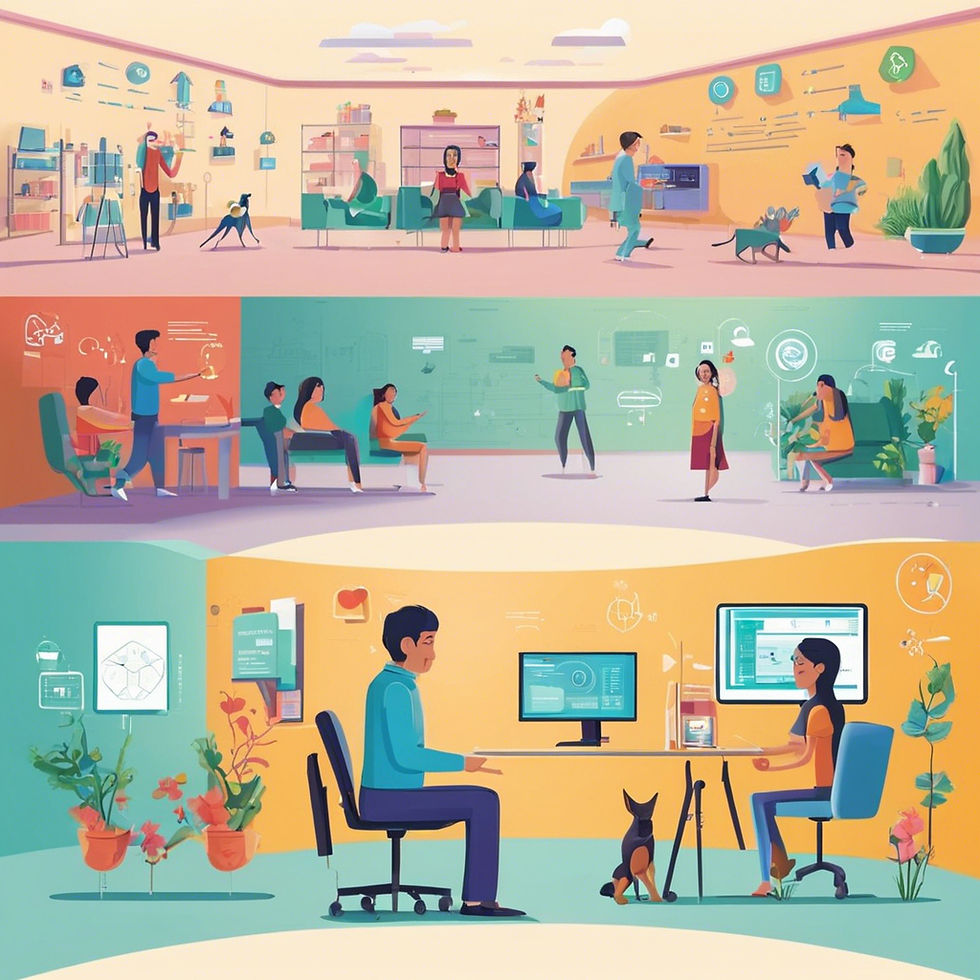The Art of Holistic Improvement in a Complex World
- Rod Morgan, Head of Faculty, RPM-Academy
- Aug 25, 2024
- 3 min read
The pursuit of continuous improvement isn't just a goal—it's a necessity. Organizations and individuals alike are navigating a world where change is the only constant. Whether it's the pressures of global competition, the ever-present threats to our natural environment, or the disruptive potential of emerging technologies like artificial intelligence (AI) and Generative AI, the stakes have never been higher. The key to thriving in this environment lies not just in isolated improvements but in embracing a holistic view that considers the broader system at play.
Continuous Improvement: A Systems Perspective
The concept of continuous improvement, often associated with methodologies like Lean Six Sigma, is traditionally focused on eliminating waste, reducing variation, and enhancing quality. But in a world where every action has a ripple effect, it’s clear that improvement efforts can't be confined to departmental silos.

Imagine dropping a pebble into a still body of water. The most pronounced impact happens where the pebble first meets the water, creating a significant displacement. But the effect doesn’t stop there. Ripples form and move outward, gradually spreading across the surface. Over time, these ripples may seem to smooth out and dissipate, but the initial impact of the pebble is felt far beyond the point of entry.
In the context of continuous improvement, each change or improvement is like that pebble. The most immediate effects may be felt closest to the source, but the ripples—whether in processes, behaviors, or outcomes—extend throughout the entire system. Some effects might be subtle, but they are there, influencing and interacting with other elements of the system in ways that might not be immediately visible.
True improvement requires a systems thinking approach—one that sees the organization as an interconnected whole, where each process, each decision, and each outcome is part of a larger, dynamic system. Leaders and teams must be aware that even small changes can create ripples that affect the entire organization, and beyond. The challenge is not just in managing these ripples but in understanding and harnessing them to drive meaningful, lasting improvement.
Innovation and Resilience: The Twin Pillars of Modern Strategy

Innovation has always been a driving force for improvement, but in the age of AI and Generative AI, it takes on new dimensions. These technologies have the power to transform industries, but they also present unique challenges. As organizations seek to leverage these tools, they must do so with an understanding of how they fit within the broader system. Disruptive technologies can be powerful enablers of improvement, but only if they're integrated thoughtfully and strategically.
This brings us to the importance of resilience. In an unpredictable world, the ability to scale and adapt is crucial. Strategies must be designed not just for today's challenges but for tomorrow's uncertainties. This is where the synergy between innovation and resilience comes into play. By fostering a culture that encourages experimentation and embraces change, organizations can build the agility needed to thrive in any environment.
The Human and Natural Systems: A Call to Action

It's impossible to discuss improvement in today's world without acknowledging the broader context of current global affairs. The interconnectedness of people and nature reminds us that our actions have far-reaching consequences. The challenges we face—whether environmental, social, or economic—demand solutions that are both innovative and sustainable. This is where a holistic view becomes not just beneficial, but essential.
Organizations must recognize that their success is tied to the well-being of the larger system. This means adopting practices that not only drive improvement within their walls but also contribute to the health of the communities and ecosystems they touch. It's about creating value in a way that is aligned with the greater good—a concept that resonates deeply with the principles of systems thinking.
The Path Forward: Continuous Learning and Growth
In this complex, interconnected world, the pursuit of improvement is a journey that requires continuous learning and growth. This is where the importance of investing in one's knowledge and skills comes into play. As the landscape evolves, so too must our understanding of the tools, methods, and strategies that will drive success.
At RPM-Academy, we believe that continuous education is the cornerstone of personal and professional growth. Our all-access monthly subscription membership provides a gateway to a wealth of knowledge, from Lean Six Sigma methodologies to the latest in AI and innovation... an ever-expanding online resource of 985 courses and 108 certificates. By equipping yourself with these skills, you're not just preparing for the challenges of today—you're positioning yourself to thrive in the world of tomorrow.
Join us on this journey of continuous improvement. Together, we can shape a future that is not only more efficient but also more resilient, innovative, and aligned with the broader system in which we all operate.









Comments